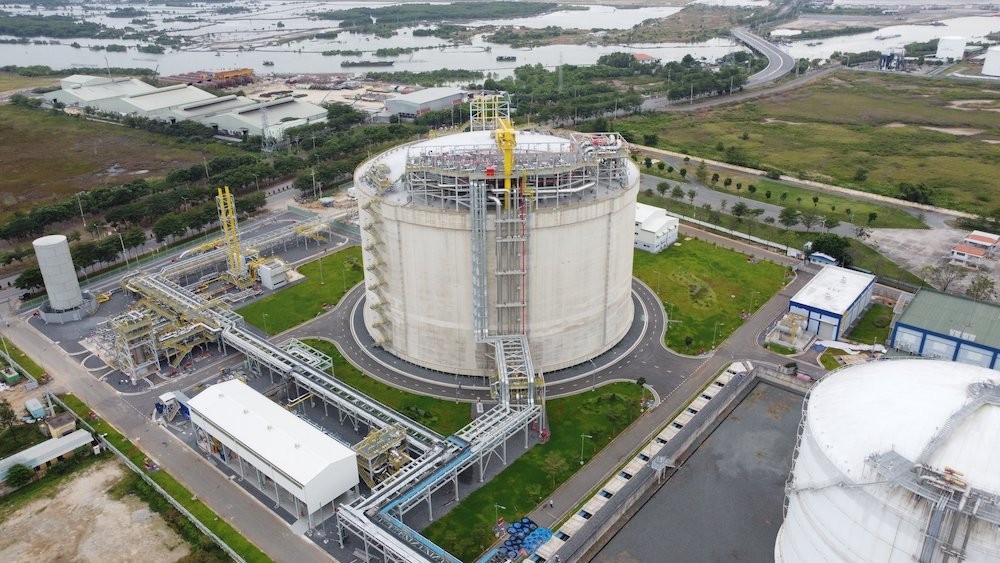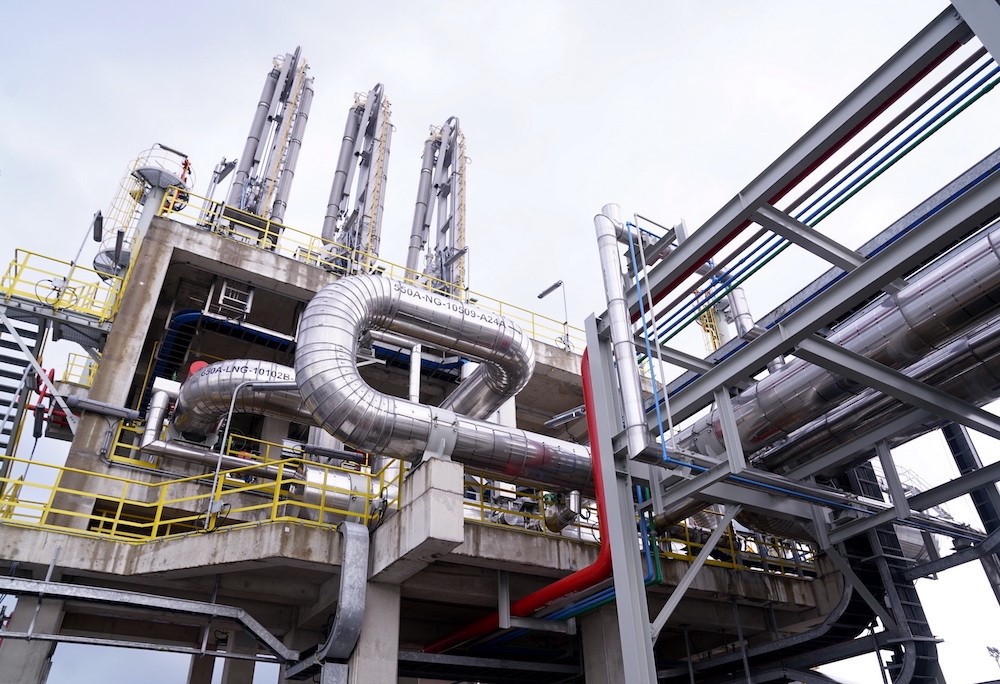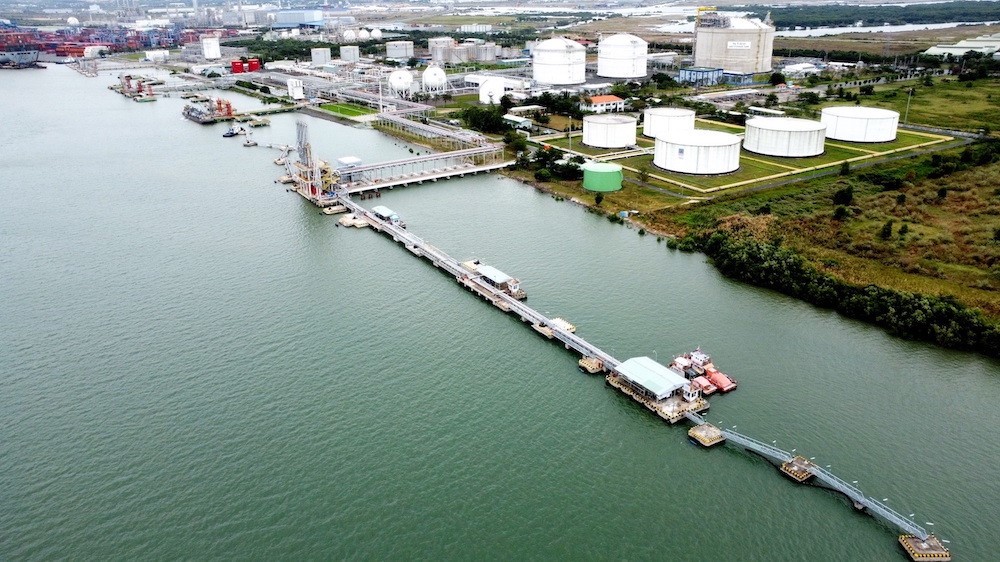On July 10, the Maran Gas Achilles vessel (Greek nationality) will arrive at LNG Thi Vai Terminal (Ba Ria-Vung Tau). This is considered a historic moment of Vietnam's energy industry.
Mr. Tran Nhat Huy, Deputy General Director of PV Gas, Leader in charge of the campaign to receive the vessel, information; forces such as maritime port authorities, border guards, pilots and customs also participate in this historic fuel vessel reception campaign.
Specifically, on the evening of July 9, the Maran Gas Achilles vessel will dock at buoy number 0. By the morning of July 10, the pilot will be able to board the ship. From 7-9 am on the same day, the vessel will arrive at Thi Vai terminal.
The entire transition from the middle of the navigable channel to the port is carried out by 4 escort towing vessels.

LNG Thi Vai warehouse

LNG pipeline system
According to Mr. Huy, all emergency response plans, or preparation for oil spills from the water surface area to the shore have been rehearsed by functional forces.

The port warehouse receives 70,000 tons of LNG vessel
Up to this time, LNG Thi Vai Terminal is the first large-scale and most modern LNG complex in the country. PV Gas General Director, Mr. Pham Van Phong, said that for easy visualization, the technology of making LNG storage facilities is equivalent to the complexity of a nuclear power plant. The process of investing in LNG infrastructure is expensive, in addition, not every investor with money can build it, because it requires professionalism and technical knowledge of the industry.
According to Mr. Phong, LNG is a new energy source for Vietnam, but not new in the world. More than 60 years ago, LNG ships from the US were transported to Japan, which means that Vietnam is 6 decades behind some countries in the world in the energy story. However, up to now, mechanisms and policies have not been developed to ensure that LNG can be an alternative fuel source for electricity generation to replace traditional fuels such as coal and oil.
To gain better understanding, liquefied natural gas (LNG), when burned produces 40% less CO2 emissions than coal and 30% less than petroleum; does not emit soot, dust and produces only a negligible amount of SO2. This makes it the cleanest fossil fuel.
The United States is a prime example of using gas for electricity generation. By 2022, electricity production in the US from gas power plants reached 40%; coal reached 20%; the rest comes from renewable energy (21.5%) and nuclear (18%).
Many other countries have also accelerated their transition to gas such as China, with gas accounting for 10% of total energy consumption; Japan with 21.3% and Korea with 18%.
In Vietnam, the Power Plan VIII recently approved by the Government has also oriented the development of power plant projects using traditional fuels to switch to using liquefied natural gas (LNG) on a very large scale, from 0% in 2020 to approximately 22.400 MW in 2030, which accounts for nearly 14.9% of the total source scale in 2030.